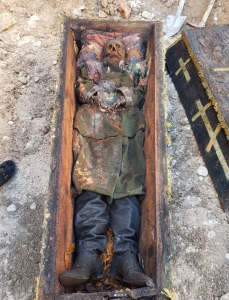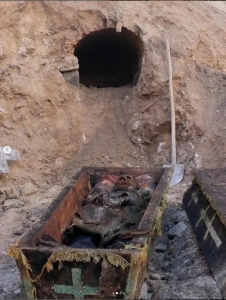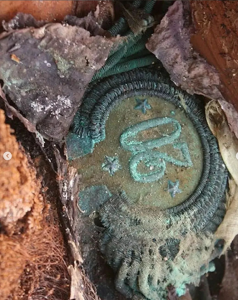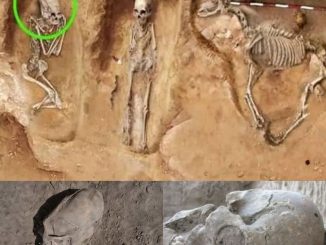A Discovery Bridging Centuries
In the city of Ardahan, nestled in Turkey’s northeastern reaches, a remarkable discovery has brought the past vividly to life. The grave of a 19th-century Russian soldier, a silent witness to the turbulent history between Russia and Turkey, was found, shedding light on a period marked by conflict and change. Ardahan, which fell to Russian troops in May 1877 during the Russo-Turkish War, has long been a land where the echoes of history linger in the air. The discovery of the soldier’s grave, complete with a coffin decorated in the Russian Orthodox tradition, opens a new window into understanding the personal stories intertwined with historical events.

A Glimpse into History: The Soldier’s Final Resting Place
The grave, a poignant remembrance of the Russo-Turkish War, provides a unique insight into the life and death of those who fought. The coffin, adorned with the distinct motifs of the Russian Orthodox faith, serves as a testament to the cultural and religious identity of the soldier within. This find not only highlights the historical significance of Ardahan as a strategic location but also humanizes the often impersonal narrative of war.
Images of the excavation site and the decorated coffin invite viewers to connect with this discovery on a personal level. Through these visual aids, one can appreciate the craftsmanship of the coffin and, by extension, the care with which the soldier was laid to rest. It’s a reminder that behind every historical event lie countless personal stories of hope, despair, courage, and sacrifice.

The Significance of the Discovery
The finding of the Russian soldier’s grave in Ardahan serves multiple purposes. Academically, it enriches our understanding of the military history and burial practices of the era, offering tangible evidence of the cultural norms and values that influenced how societies commemorated their fallen. Culturally, it serves as a bridge between the past and present, allowing us to reflect on the complexities of war, the fates of individuals caught in its grasp, and the enduring nature of human dignity in death.
Moreover, this discovery fosters a sense of shared heritage between Russia and Turkey, two nations with a long history of conflict and cooperation. It reminds us that history is not merely a collection of dates and events but a tapestry woven from the lives of people who have shaped and been shaped by their times.

The Duty to Preserve Our Shared History
The excavation of the 19th-century Russian soldier’s grave in Ardahan underscores the importance of preserving antiquities and archaeological sites. Each artifact, each site, tells a story that is a piece of the larger puzzle of human history. By protecting these sites, we honor the memory of those who came before us and ensure that future generations can learn from and be inspired by their stories.
Protecting such sites requires international cooperation and a shared commitment to valuing our cultural heritage. It’s not only about preserving the past; it’s about respecting the narratives that have led us to where we are today. As we reflect on the discovery in Ardahan, let us remember the importance of safeguarding our collective history, for it is only by understanding our past that we can navigate our future with wisdom and empathy.



